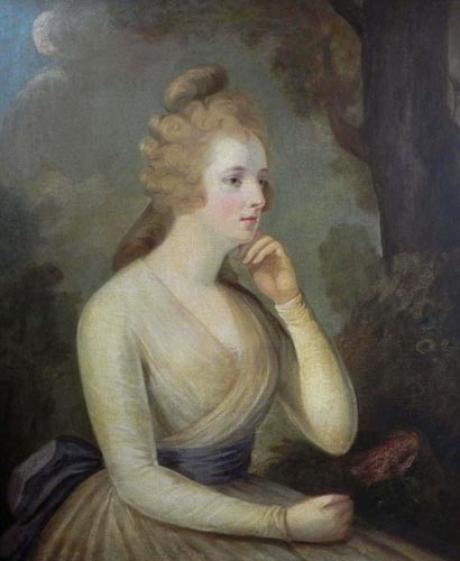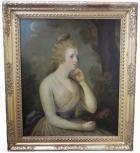By direct Family Descent
Elizabeth Mitchell, the daughter of Sir Charles Mitchell, married Alexander Cosby Jackson on October 13th 1811 at St. Peter's Church, Colombo, Ceylon.
Sir Charles Mitchell was captain in the Naval Service, H.E.I.C., knighted at St James, March 18, 1796, for an action in the Straits of Malacca, with a French frigate, he being then Captain of the “William Pitt,” East Indiaman, died suddenly, 24th March 1808. He married at Calcutta about 1788, Sarah, daughter of Thomas Patterson, who died 17th July 1803, and had issue
1. Charles, (only son), born at London, 13th July, 1789, an officer in H.E.I.C.S., died unmarried
2. Elizabeth Katherine, born 28th November, 1792, married in Ceylon, 1812, Alexander Cosby Jackson of Edmonton, Middlesex, Colonel 40th Foot, and had issue
(a) Sir Charles Robert Mitchell Jackson, born 1813, Judge of Supreme Court of India, died 1874, married 1844, Jane, daughter of Edward Armitage of Farnley Hall, Yorks, and had issue; Charles William Leathley, clerk of Insolvent Court, Bombay; Laurence Colville, barrister at Law, married Nina, daughter of George Goss, London; Francis Sydney, R.N., killed at bombardment of Alexandria
(b) Robert, Captain 40th Foot, married Elizabeth, daughter of Sir Peter Halkett, Bart, of Pitfirrane, and had issue
(c) William Forbes, married (first) ----------, daughter of Sir --- Thomas, Bart; and (second) Cecilia, daughter of admiral Fishbourne, and had issue
(d) Sydney Jackson, Captain 70th Foot
(e) Emma, married Rev. E H Armitage, and died 1849.
Robert Home (1752–1834) was a British portrait oil painting artist who travelled to the Indian subcontinent in 1791. During his travels he also painted several historic scenes and landscapes. Born in Hull in the United Kingdom as the son of an eminent army surgeon from Greenlaw in Berwickshire, he joined Royal Academy Schools in 1769. He went to Rome in 1773 for further training in painting under Angelica Kauffman and remained in Italy until 1777.[2] From 1783–1789 he worked in Dublin and London before leaving for India in 1790. On 5 February 1791, Home was allowed to follow Lord Cornwallis' army in the Third Anglo-Mysore War as it moved towards Bangalore. Home painted some of his well-known paintings such as The Hostage Princes leaving home with the Vakil, Ghulam Ali and Lord Cornwallis Receiving Tipu Sahib's Sons during the period while he was in South India. In November 1792, Home came into contact with artists Thomas Daniell and William Daniell who inspired him to continue painting landscapes. He visited Mahabalipuram (Mamallapuram) in January/February 1793 and the two paintings he painted as a result, titled Ruins of Mahabalipuram are now in the collection of The Asiatic Society, Kolkata. In 1795 Home arrived in Calcutta (Kolkata) and continued his work there as an established artist. He was for some time Secretary of the Society and the first Library-in-Charge (1804) and donated his small but valuable art collection. In 1814 he moved to Lucknow and became a court painter of Nawab Ghazi-ud-Din Haider (1769–1827). He travelled to Kanpur in 1827 where he eventually died in 1834. His Select Views in Mysore, the Country of Tippoo Sultan were published in London and Madras in 1794, and in Calcutta he made 215 watercolours of Indian mammals, birds and reptiles, some of which were also worked up as oils.


